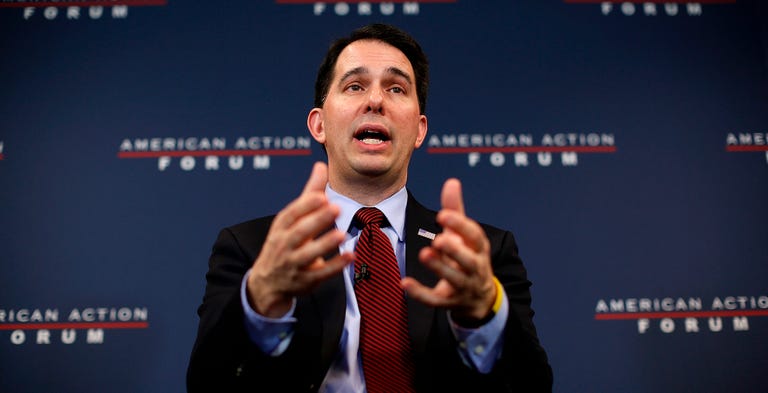ThinkProgress
Toxic Tar Creek continues to harm residents, as cleanup stalls
“Its robbery. It was all preventable. This shouldn’t have happened.”
Rebecca Nagle February 1, 2018
 TAR CREEK, OKLAHOMA (CREDIT: REBECCA JIM)
TAR CREEK, OKLAHOMA (CREDIT: REBECCA JIM)
TAHLEQUAH, OKLAHOMA — When I was nine years old, the top 12 inches of dirt in my yard were excavated and hauled off by the Environmental Protection Agency (EPA).
My family’s 1990s lead-contaminated topsoil on the north side of Joplin, Missouri was a small piece of one of the worst man-made environmental disasters in the United States. As a recent POLITICO investigation detailed, decades of mining lead, zinc, and other heavy metals contaminated the ground, air, and waterways of northeastern Oklahoma and parts of Kansas and Missouri so badly that local rivers run bright orange and residents have lead poisoning at three times higher the rate found in Flint, Michigan. Despite 34 years and over $300 million spent on cleanup, the massive Tar Creek Superfund site is far from restored.
In December, EPA Administrator Scott Pruitt, former attorney general of Oklahoma, announced a list of 21 Superfund sites — places that have been contaminated by hazardous waste — in need of expedited cleanup. Pruitt has called the decades-long remediation of sites like Tar Creek “unacceptable” and has repeatedly vowed to make Superfund site cleanup a priority. President Donald Trump’s budget, however, would have slashed the Superfund cleanup program by about 25 percent.
“We [Tar Creek] have always been on the list. What being on a new list means, I don’t have a clue,” said Rebecca Jim, director of LEAD Agency (Local Environmental Action Demanded), a citizens advocacy group in Miami, Oklahoma that is focused on the clean up efforts. “[Pruitt] might be paying more attention, but he is also telling Congress to cut money for Superfund and the EPA. How are they going to do more with less?”
Jim first became an advocate for her toxic community while she was working as an Indian counselor in Miami public schools and started noticing something in her students.
“Kids in Miami were different. Many of them had more difficulty settling down, paying attention, and staying on task. A lot of kids would drop out and give up,” she said.
A year into her new job, the local stream, Tar Creek, turned bright orange and all the fish died. The year after that, the EPA came.
 TAR CREEK, OKLAHOMA (CREDIT: REBECCA JIM)
TAR CREEK, OKLAHOMA (CREDIT: REBECCA JIM)
“We have a lot of people with kidney disease. We have a lot of people with cardiovascular disease. We have children that are being exposed before they are even born. I have former students that are dead already,” Jim said. “It’s robbery. It was all preventable. This shouldn’t have happened. And now their children will die as well if we don’t finish [the cleanup].”
In 1993, the University of Oklahoma found 34 percent of children in the Quapaw Tribe had lead blood levels above the federal safety limit, while the national average for elevated lead blood levels is just 3 percent.
A history of injustice
The injustice of Native residents in Northwest Oklahoma living in a poisonous environment with disastrous health consequences started over 150 years ago. In the mid-1800s, the Quapaw tribe was removed from their homeland in present-day Arkansas and relocated to a small stretch of land in Indian Territory (present-day Oklahoma). At the time, the government “thought the land was worthless until all of a sudden they discovered all these minerals,” Tim Kent, the Environmental Director for the Quapaw Tribe, told ThinkProgress.
The Bureau of Indian Affairs (BIA) had tribal members declared incompetent, so mining companies could lease their land. Quapaw citizens were appointed White “guardians” to ostensibly manage the royalties collected from mining. Only one-sixth of Quapaw landowners ever saw any of the money. The tribe is currently settling a lawsuit with BIA over the mismanaged funds.
The mining companies that profited greatly from illegally leased land produced half of the lead and zinc for bullets in both World Wars. But after the local mining industry ground to a halt in the 1960s, generations of residents now live with what was left behind. Ottawa County, in northeast Oklahoma, is dotted with man-made mountains built from toxic mine tailings that locals call “chat piles” — some are more than 13 stories tall. People used the chat to build roads, fill in driveways, and even line playgrounds.
Residents now know that dust from the chat contains high levels of lead, zinc, and other toxic heavy metals. When it rains, water flows through the chat piles and a maze of underground tunnels, until local streams are so polluted they turn an eerie orange. Mining left the ground so unstable that cave-ins have been known to swallow entire houses, the largest one eating nine.
After cleanup lagged for decades, the EPA contracted with the Quapaw Tribe in 2014 to remediate a historical site on tribal land. The Quapaw then asked if they could take charge of the entire cleanup effort themselves.
“The EPA was reluctant at first to turn it over because it had never been done before. We are the first Native American tribe to head up a cleanup effort,” Kent said. “We had the most at stake, so why shouldn’t we do it?”
While the EPA hesitated to turn the cleanup over to the Quapaw Tribe, Kent believes the pace of the cleanup has improved since they were awarded the contract. Their role has now been cited as a best practice in giving local institutions control with federal oversight. “Tar Creek cleanup is an excellent example of how the program should work,” Albert Kelly, senior adviser to the EPA administrator said. “State and local partners, Tribal partners, and EPA — all working together year-after-year to address historical pollution at this mega-site. It’s cooperative federalism working at its best.”
“We’ve removed two million tons of waste. There’s about 50 million more to move,” Kent said.
While the partnership between the tribe and the EPA is a step in the right direction, the main determining factor in how much longer residents in Ottawa County are going to live with toxic heavy metals in their air, ground and water, is funding. At the current rate of funding, Tar Creek is looking at several more decades of clean up. With Trump’s substantial cuts to the EPA budget, and the Superfund program in particular, the effort could take even longer. Oklahoma’s own environmental budget has also undergone significant cuts in the past few years, reinforcing the need for federal money to fund the cleanup.
“If [the EPA] wanted to fix it they would put more money in it and fix it all at once. They wouldn’t budget to do 100 acres at a time when there are 26,000 acres that need to be done,” Jim said.
Thirty years of clean up later
Rebecca Jim left her Oklahoma home early last week to fly to Washington, D.C. for a meeting with Pruitt and Kelly. Pruitt’s appointment of Kelly last year garnered widespread criticism after a report by the Intercept found that he has no background in science or environmental issues. The Oklahoma banker-turned-environmental-regulator was actually fined $125,000 by the Federal Deposit Insurance Corporation (FDIC) and banned from banking for life. While a banker, Kelly’s family business loaned Pruitt, then a state senator, money to buy a five-car garage home and a share in a minor league baseball team. Kelly also donated to Pruitt’s campaigns on multiple occasions.
The Superfund Task Force led by Kelly released a set of recommendations last year, all of which were immediately adopted by Pruitt. In response to a lawsuit asking for more information on the task force, the agency said it had no documentation, minutes, or written standards for choosing its members. Earlier this month, Kelly declined to testify at a congressional hearing about Superfund site clean up efforts. The EPA did not return ThinkProgress’ request for comment.
Leaders from Superfund sites across the United States were brought together for the EPA meeting by Lois Gibbs, whose advocacy over hazardous waste next to her home in Love Canal in upstate New York started the Superfund program.
“We settled down at the table across from the people who can make our lives, our land, our water safer, at Tar Creek, and at other damaged places around the country. We went to speak for every single American who one day wakes up to find they too are living near a superfund site,” Jim told ThinkProgress in an email.
Pruitt and Kelly politely listened to the group of citizen advocates from toxic communities, including a mother who had lost her son, but neither offered concrete solutions or promises for moving forward, Jim said. While the current administration is slashing funds for cleaning up toxic sites, they are also slashing regulations and oversight that prevent the creation of future sites. Mining ended at Tar Creek over 40 years ago. More than 30 years of clean up later, it is likely that local residents will continue live with the consequences for decades to come.
“Back in the early 1980s after Tar Creek had turned orange, everybody here thought the new EPA would do something and do it fast,” Jim said. “We’re still waiting.”
Rebecca Nagle is a Citizen of Cherokee Nation and a two spirit (queer) woman. She is currently a writer and organizer living in Baltimore, MD.

 Getty Images
Getty Images


 Pennsylvania‘s current Republican gerrymander. Stephen Wolf/
Pennsylvania‘s current Republican gerrymander. Stephen Wolf/ Filipinos ride energy efficient electric tricycles during a test drive in Taguig city, south of Manila, Philippines, 12 January 2018. The Department of Energy (DOE) donated 200 units of energy efficient electric tricycles to the affected residents of war-torn Marawi as part of its efforts to help rebuild the city. Photo by FRANCIS R. MALASIG/EPA-EFE/REX/Shutterstock (Malasig/Epa-Efe/Rex/Shutterstock/Malasig/Epa-Efe/Rex/Shutterstock)
Filipinos ride energy efficient electric tricycles during a test drive in Taguig city, south of Manila, Philippines, 12 January 2018. The Department of Energy (DOE) donated 200 units of energy efficient electric tricycles to the affected residents of war-torn Marawi as part of its efforts to help rebuild the city. Photo by FRANCIS R. MALASIG/EPA-EFE/REX/Shutterstock (Malasig/Epa-Efe/Rex/Shutterstock/Malasig/Epa-Efe/Rex/Shutterstock) © Greg Nash
© Greg Nash President Donald Trump’s line, “We have ended the war on beautiful, clean
President Donald Trump’s line, “We have ended the war on beautiful, clean  Christa Case Bryant/The Christian Science Monitor
Christa Case Bryant/The Christian Science Monitor Shutterstock
Shutterstock

 African Honey Trail sketch map. Map by Hanna Söderström.
African Honey Trail sketch map. Map by Hanna Söderström. smoking hives for installation. Image thanks to Porini Association
smoking hives for installation. Image thanks to Porini Association Ethiopian hives in tree. Image thanks to Porini Association
Ethiopian hives in tree. Image thanks to Porini Association